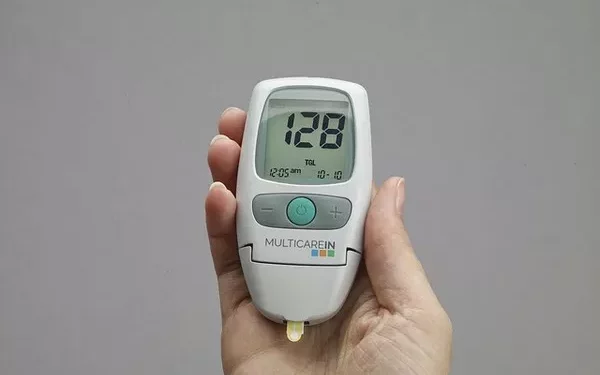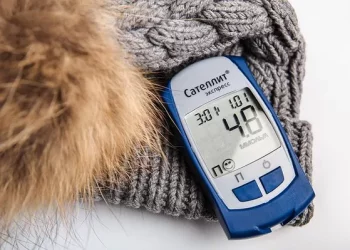Blood glucose levels are a crucial aspect of overall health, especially for individuals with diabetes. Maintaining balanced blood glucose is essential for preventing long-term health complications and for managing diabetes effectively. But what exactly constitutes a “good” blood glucose level? This article explores the factors that determine healthy blood glucose levels, how to measure them, and the strategies you can use to achieve and maintain optimal blood sugar control.
Understanding Blood Glucose and Its Role in the Body
Blood glucose, or blood sugar, is the amount of glucose present in the blood. Glucose is a type of sugar that serves as the primary source of energy for the body’s cells. It comes from the food we eat, especially carbohydrates, and is transported through the bloodstream to cells with the help of insulin, a hormone produced by the pancreas.
For individuals without diabetes, the body naturally regulates blood glucose levels within a narrow range. However, for people with diabetes, this regulation is impaired, leading to periods of both high (hyperglycemia) and low (hypoglycemia) blood sugar levels. Maintaining optimal blood glucose levels is essential for everyone, but it becomes especially crucial for individuals living with diabetes.
What is a Good Blood Glucose Level?
A “good” or healthy blood glucose level is one that is within the recommended range, not too high (which can lead to long-term complications like heart disease, nerve damage, and kidney disease), and not too low (which can cause immediate issues like confusion, dizziness, and, in extreme cases, loss of consciousness). To determine what constitutes a good blood glucose level, it’s important to understand the standard reference ranges and how they differ depending on various factors, such as whether you are fasting or after meals.
1. Fasting Blood Glucose Levels
Fasting blood glucose refers to the blood sugar level after you have not eaten for at least 8 hours. This test is commonly used to assess how well the body is managing blood sugar when no food is being consumed.
Normal Range: A normal fasting blood glucose level for most people is between 70 and 99 mg/dL (3.9 to 5.5 mmol/L).
Prediabetes: A fasting blood glucose level between 100 and 125 mg/dL (5.6 to 6.9 mmol/L) is considered indicative of prediabetes.
Diabetes: A fasting blood glucose level of 126 mg/dL (7.0 mmol/L) or higher, on two separate tests, suggests the presence of diabetes.
A good fasting blood glucose level is one that remains below 100 mg/dL (5.5 mmol/L) for those who are not diabetic and ideally remains as close to the normal range as possible for people with diabetes.
2. Postprandial Blood Glucose Levels
Postprandial blood glucose is the blood sugar level measured after eating. Since eating increases blood glucose levels, the postprandial level is a good indicator of how effectively your body is managing glucose after meals.
Normal Range: Typically, a healthy postprandial blood glucose level should be below 140 mg/dL (7.8 mmol/L) two hours after eating.
Diabetes: For individuals with diabetes, the target postprandial glucose level is generally less than 180 mg/dL (10.0 mmol/L) two hours after meals.
Maintaining a postprandial blood glucose level below the 140 mg/dL (7.8 mmol/L) threshold is essential for those without diabetes. People with diabetes should work with their healthcare provider to determine their personalized target postprandial glucose levels.
3. Hemoglobin A1c (HbA1c) Levels
The hemoglobin A1c test is a long-term marker of blood glucose control, showing the average blood glucose level over the past 2-3 months. It measures the percentage of glucose attached to hemoglobin, the oxygen-carrying protein in red blood cells. The A1c test is often used to monitor diabetes management.
Normal Range: For people without diabetes, a normal HbA1c level is typically below 5.7%.
Prediabetes: An A1c level between 5.7% and 6.4% indicates prediabetes.
Diabetes: An A1c level of 6.5% or higher suggests diabetes.
For individuals with diabetes, the target A1c is generally below 7%, but individualized goals may be recommended based on factors such as age, comorbid conditions, and the risk of hypoglycemia.
4. Random Blood Glucose Levels
Random blood glucose testing measures the blood glucose level at any given time, regardless of when you last ate. This test is useful for diagnosing diabetes when symptoms of high blood sugar are present.
Normal Range: A normal random blood glucose level is below 140 mg/dL (7.8 mmol/L).
Diabetes: A random blood glucose level of 200 mg/dL (11.1 mmol/L) or higher, along with symptoms such as excessive thirst, urination, and fatigue, is suggestive of diabetes.
A good random blood glucose level is ideally below 140 mg/dL (7.8 mmol/L) in individuals without diabetes and is well-controlled in individuals with diabetes.
5. Continuous Glucose Monitoring (CGM)
Continuous glucose monitoring (CGM) is an advanced tool that provides real-time data on blood glucose levels throughout the day and night. This method allows for detailed tracking of blood glucose fluctuations and can be particularly beneficial for people with diabetes who require tight glucose control.
While specific target levels for CGM can vary, the goal is to maintain blood glucose levels within a narrow range throughout the day and night to prevent both hyperglycemia and hypoglycemia. Many individuals with diabetes aim for a target range of 70 to 180 mg/dL (3.9 to 10.0 mmol/L) throughout the day, with a goal of minimizing time spent outside of this range.
Factors That Affect Blood Glucose Levels
Several factors can influence blood glucose levels, and understanding these can help individuals maintain a good blood glucose level:
1. Diet
What you eat plays a significant role in determining your blood glucose levels. Foods high in refined sugars and carbohydrates, such as sugary snacks, white bread, and soda, can cause rapid spikes in blood glucose. On the other hand, foods high in fiber, protein, and healthy fats help stabilize blood glucose levels.
To maintain a good blood glucose level, it’s important to eat a balanced diet that includes whole grains, lean proteins, healthy fats, vegetables, and fruits with a low glycemic index.
2. Exercise
Physical activity helps regulate blood glucose by increasing the body’s sensitivity to insulin and helping muscles utilize glucose for energy. Regular exercise, including both aerobic activities (like walking, cycling, or swimming) and resistance training (like weight lifting), can help maintain healthy blood sugar levels.
However, it’s important to note that exercise can have both short-term and long-term effects on blood glucose. Intense physical activity can initially raise blood glucose due to the release of stress hormones like adrenaline, but regular exercise can lead to better long-term blood glucose control.
3. Medications
For individuals with diabetes, medications like insulin and oral hypoglycemic agents are used to regulate blood glucose levels. Insulin is used to lower blood glucose levels by facilitating the uptake of glucose into cells. Other medications, such as metformin, sulfonylureas, and GLP-1 agonists, work in different ways to help lower blood sugar.
It’s important to work with a healthcare provider to adjust medication dosages based on your blood glucose monitoring results and lifestyle factors.
4. Stress
Stress can have a significant impact on blood glucose levels. When the body is stressed, it releases hormones like cortisol and adrenaline, which can raise blood sugar levels. Chronic stress can lead to prolonged periods of elevated blood glucose, making it more difficult to maintain a good blood glucose level.
Practicing stress-management techniques such as deep breathing, meditation, yoga, or mindfulness can help reduce stress and prevent its negative effects on blood glucose control.
5. Sleep
Poor sleep quality or insufficient sleep can negatively impact blood glucose regulation. Sleep deprivation can lead to insulin resistance, making it harder for the body to manage glucose. Ensuring you get adequate, restful sleep is essential for maintaining healthy blood glucose levels.
6. Illness
During illness, the body’s stress response can lead to elevated blood glucose levels. Fever, infection, and other illnesses can cause fluctuations in blood sugar. It’s important for individuals with diabetes to closely monitor their blood glucose levels during illness and adjust their medication and dietary plan as necessary.
How to Maintain a Good Blood Glucose Level
Maintaining a healthy blood glucose level requires a combination of good dietary habits, regular physical activity, and, in many cases, medication management. Here are some tips for maintaining optimal blood glucose control:
1. Eat a Balanced Diet
Focus on eating whole foods, including plenty of vegetables, whole grains, legumes, and lean proteins. Avoid processed foods and refined sugars, and opt for foods with a low glycemic index that release glucose gradually into the bloodstream.
2. Monitor Blood Glucose Regularly
Regular blood glucose monitoring helps you stay informed about your levels and adjust your diet, exercise, and medication as needed. Use a blood glucose meter or continuous glucose monitoring system to track your blood sugar throughout the day.
3. Exercise Regularly
Incorporate regular physical activity into your routine to improve insulin sensitivity and help regulate blood glucose levels. Aim for at least 150 minutes of moderate-intensity exercise each week.
4. Manage Stress Effectively
Engage in stress-reducing activities like yoga, meditation, or spending time in nature to help keep your blood glucose levels in check.
5. Get Enough Sleep
Ensure that you are getting adequate and restful sleep each night. Aim for 7 to 9 hours of quality sleep to support healthy blood glucose levels.
Conclusion
A “good” blood glucose level is one that falls within a healthy range, minimizing the risk of both short-term complications like hypoglycemia and long-term issues such as cardiovascular disease, kidney damage, and nerve damage. For most people, a good blood glucose level means fasting levels between 70 and 99 mg/dL, postprandial levels below 140 mg/dL, and an A1c below 5.7%.
By understanding the factors that influence blood glucose, monitoring your levels regularly, and adopting a healthy lifestyle, you can achieve and maintain a good blood glucose level, preventing both the immediate and long-term complications of poor blood sugar control. Always work with your healthcare provider to create a personalized plan for managing your blood glucose levels, whether you have diabetes or are aiming to prevent it.
Related topics:
What Is Random Blood Sugar Level Range?


























